Peoria Riverfront Museum Central Illinois Community Solar System
Peoria Riverfront Museum's Community Solar System model is the world's most complete large-scale model of the Solar System. The scale factor is 99,000,000:1, covering 6,000 square miles of Central Illinois. In addition to the Sun and 8 planets, the model includes 5 dwarf planets and numerous unnamed comets spread across the globe. Click here to see a list of cities home to unnamed comets.
The Sun is the center of the model, and is depicted on Riverfront Museum's Sun Plaza (and the wall of Dome Planetarium lobby). The Earth (5 inches in diameter) is nearly one mile from the Museum on the Rock Island/Pimiteoui Trail at the Peoria riverfront. The 3 stars of the Alpha Centauri system (the closest stars to the Sun) are represented by Little West Crater at the Apollo 11 landing site - they could be lined up across the 100’ crater, accurate for both their size and distance to the scale of the model.
![Img 9284[5] Img 9284[5]](/system/images/W1siZiIsIjIwMTQvMDEvMTAvMTBfMzZfNDhfNjcyX0lNR185Mjg0XzVfLmpwZyJdXQ/IMG_9284[5].jpg)
The Sun (46 feet in diameter) is located on Riverfront Museum's Sun Plaza. The real Sun is actually 865,000 miles in diameter.
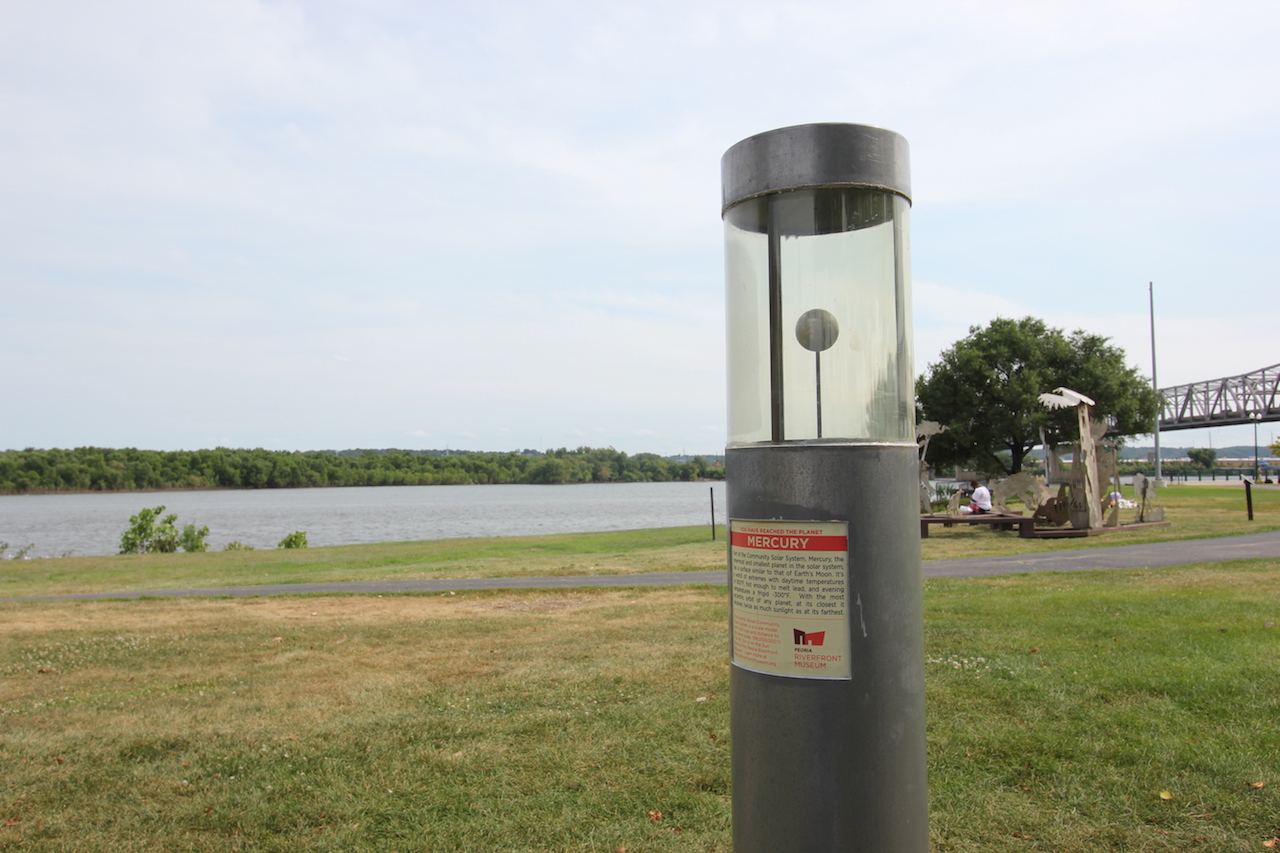
Mercury (1.93 inches in diameter) is located along the Rock Island/Pimiteoui Trail near the Riverplex Playground, about 0.36 miles from the Museum. The planet Mercury is actually 3,032 miles in diameter, and 36,000,000 miles from the Sun.
Venus (4.8 inches in diameter) is located along the Rock Island/Pimiteoui Trail near the the volleyball courts, about 0.68 miles from the Museum. The planet Venus is actually 7,521 miles in diameter, and 67,200,000 miles from the Sun.

Earth (5 inches in diameter) is located along the Rock Island/Pimiteoui Trail in Constitution Park, about 0.94 miles from the Museum. The planet Earth is actually 7,926 miles in diameter, and 93,000,000 miles from the Sun.
Mars (2.7 inches in diameter) is located along the Rock Island/Pimiteoui Trail in Detweiller Marina Park Playground, about 1.4 miles from the Museum. The planet Mars is actually 4,221 miles in diameter, and 141,600,000 miles from the Sun.
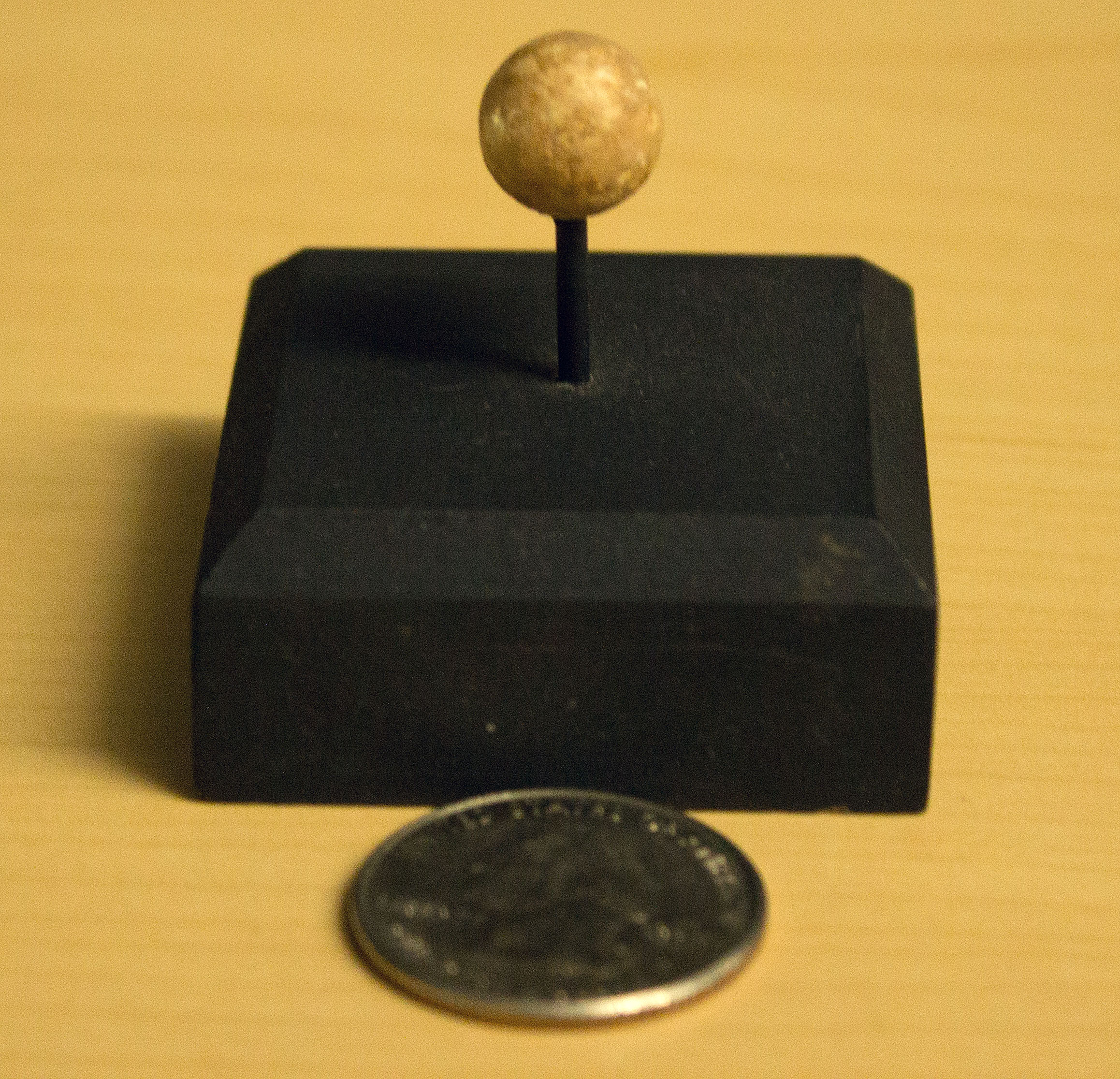
Ceres (0.4 inches in diameter) is located at the Bonnie W. Noble Center for Park District Administration, at Lakeview Park, about 2.6 miles from the Museum. The dwarf planet Ceres is actually 600 miles in diameter, and about 260,000,000 miles from the Sun.

Jupiter (55 inches in diameter) is located in the Peoria International Airport lobby, about 4.9 miles from the Museum. The planet Jupiter is actually 88,846 miles in diameter, and 483,800,000 miles from the Sun.

Saturn (46 inches in diameter) is located in Pekin Public Library (301 S. 4th St. Pekin 61554), about 8.9 miles from the Museum. The planet Saturn is actually 74,897 miles in diameter, and 890,800,000 miles from the Sun.

Uranus (18 inches in diameter) is located in Troutman Park in Princeville, about 16 miles from the Museum. The planet Uranus is actually 31,763 miles in diameter, and 1,784,800,000 miles from the Sun.

Neptune (18 inches in diameter) is located at the Wyoming Train Depot along the Rock Island Trail State Park, about 28 miles from the Museum. The planet Neptune is actually 30,775 miles in diameter, and 2,793,100,000 miles from the Sun.

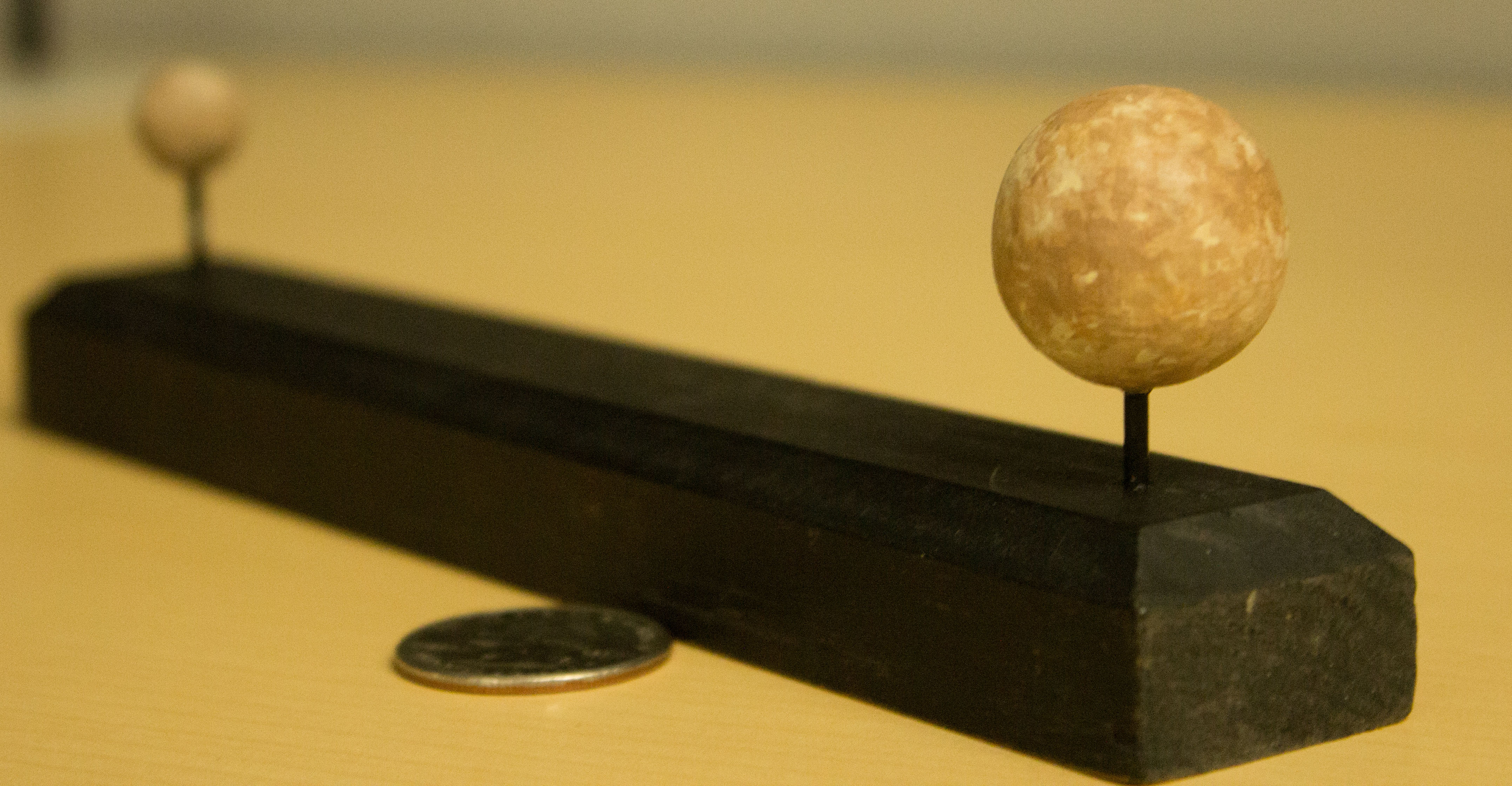
Pluto (0.9 inches in diameter) is located at Good’s Furniture (Rt 78 & 34, Kewanee), about 40 miles from the Museum. The dwarf planet Pluto is actually 1,485 miles in diameter, and 3,647,200,000 miles from the Sun.

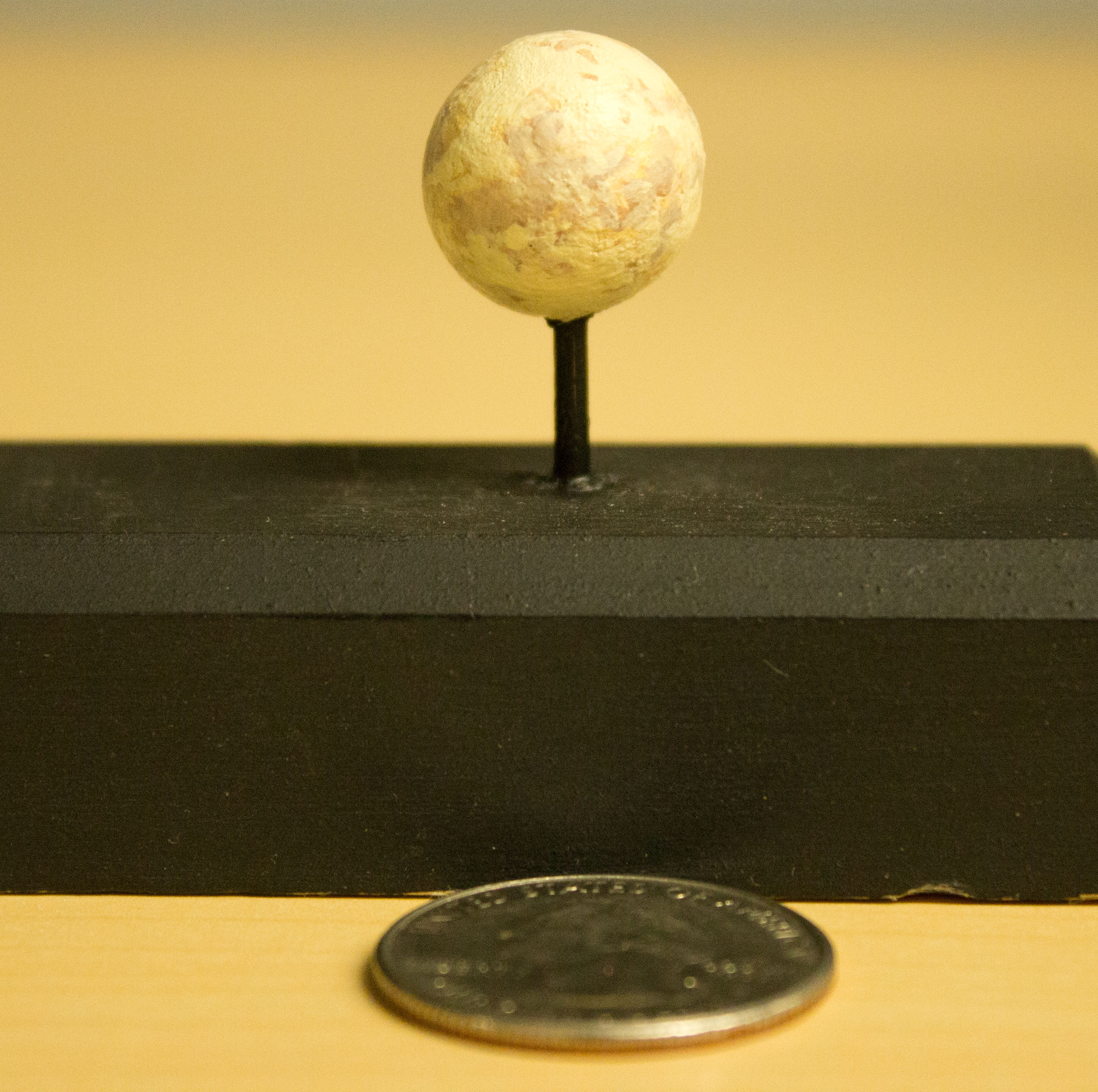
Haumea (0.7 x 0.4 inches in diameter) is located at the Children’s Discovery Museum (101 E. Beaufort, Normal, IL 61761), about 41 miles from the Museum. The dwarf planet Haumea is actually 1,218 x 619 miles in diameter (ellipsoidal), and 4,025,000,000 miles from the Sun.
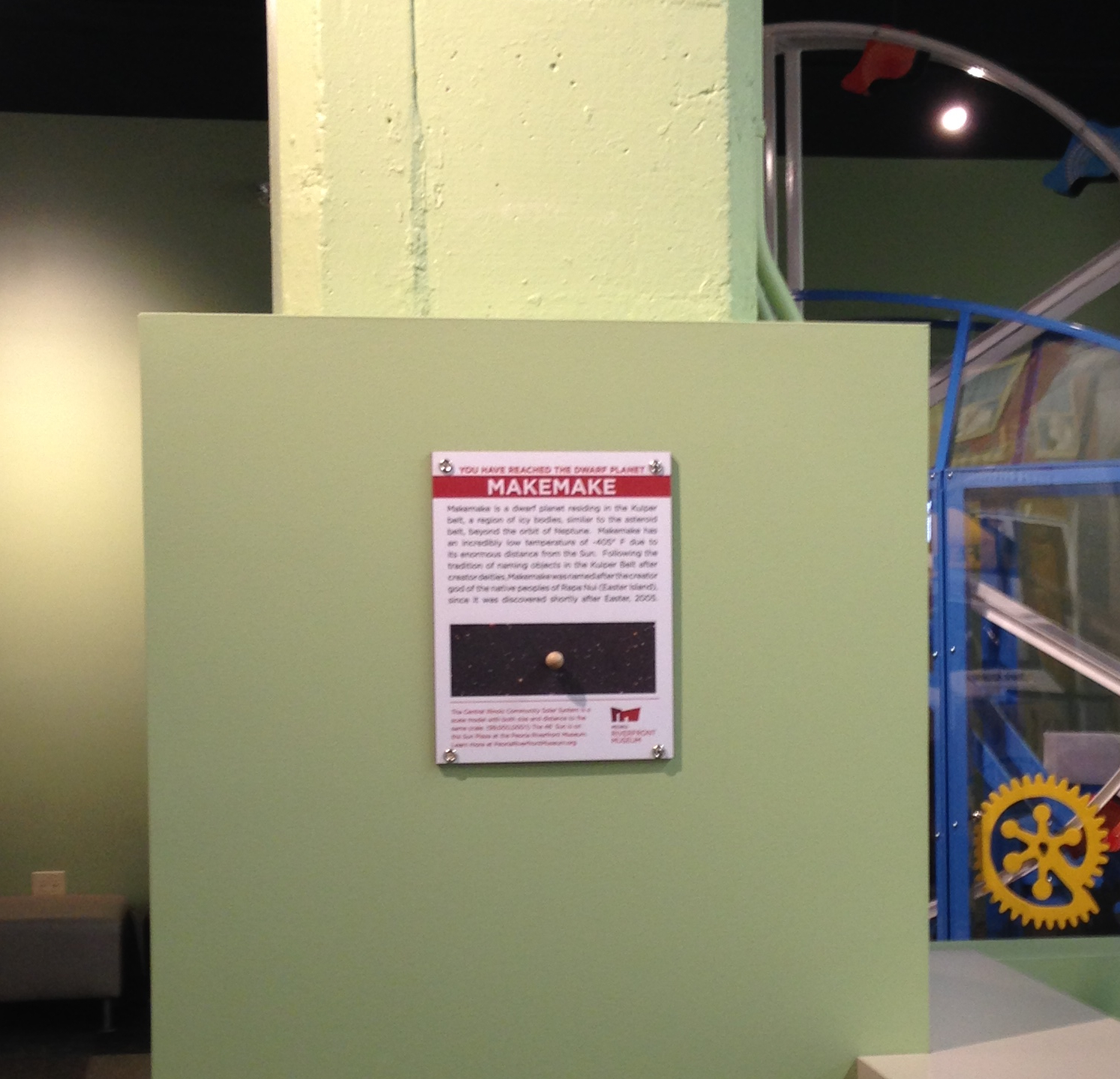
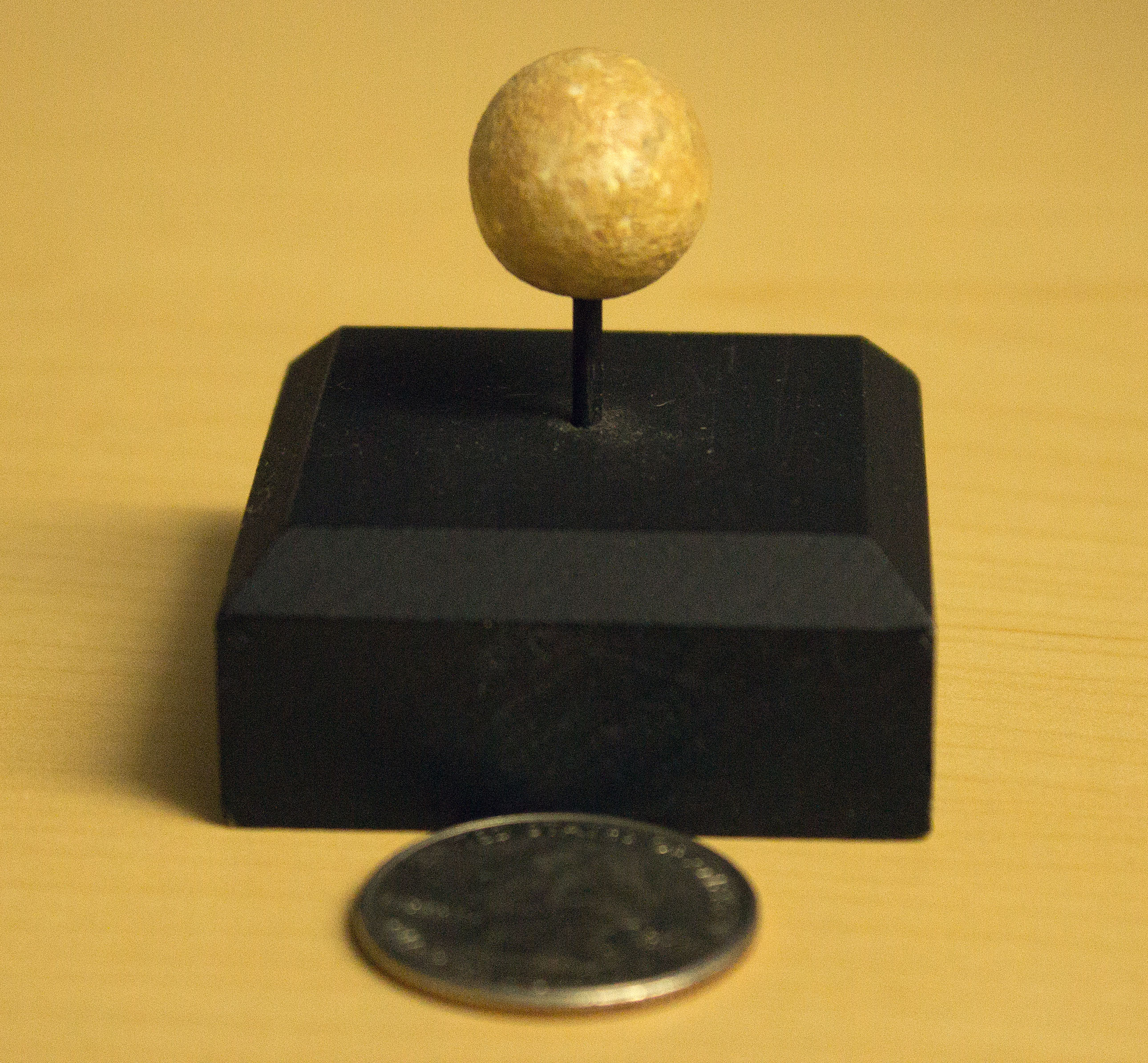
Makemake (0.6 inches in diameter) is located at the Discovery Depot (128 S Chambers St., Galesburg, IL 61401), about 43 miles from the Museum. The dwarf planet Makemake's size is undetermined, but is probably 808-1,181 miles in diameter, and 4,257,400,000 miles from the Sun.
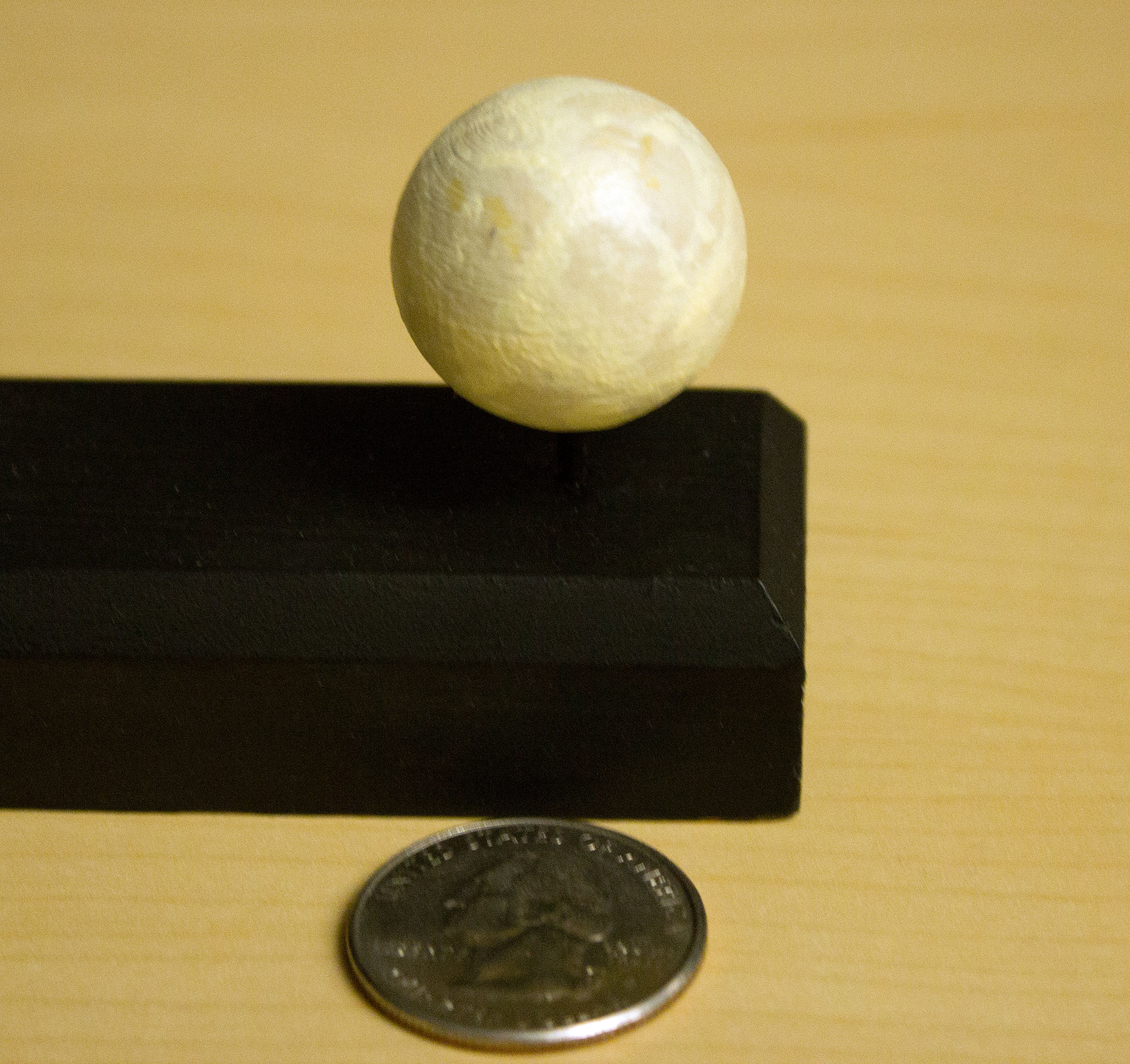
Eris (0.9 inches in diameter) is located at Western Illinois University (near room 135 of Knoblauch Hall, 1 University Circle, Macomb), about 62 miles from the Museum. The dwarf planet Eris is actually 1,491miles in diameter, and 6,293,100,000 miles from the Sun.

The Alpha Centauri Star System (closest star to the Sun), could be located at the Little West Crater, the Apollo 11 landing site on the Moon, about 238,900 miles from the Museum. The three stars could line up across the 100 foot crater. Alpha Centauri A would be 59 feet in diameter, Alpha Centauri B would be 39 feet in diameter, and Alpha Centauri C would be 6 feet in diameter. The actual stars in Alpha Centauri are 1,112,000, 741,000, and 124,000 miles in diameter, and about 4.3 light years from the Sun.
Have fun exploring the Peoria Solar System!